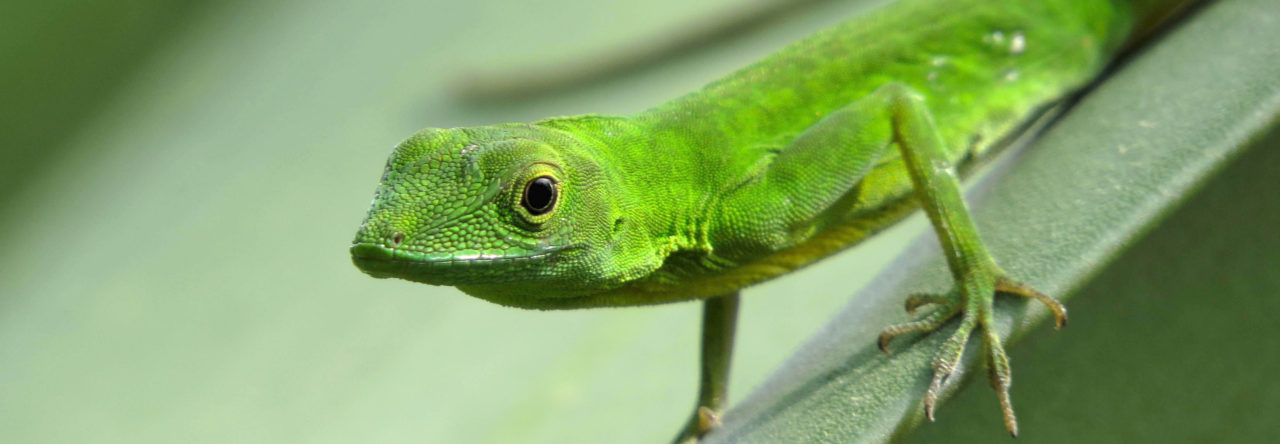In part II of the day’s Bahamian Anolis sagrei talks, Bob Cox addressed the question: How do males and females evolve different phenotypes despite sharing the same genome? And what better organism with which to study that question than anoles—lots of variation in dimorphism occurs not only among species, but also among populations within species. This study focused on two populations of Bahamian A. sagrei in which the extent of male-biased dimorphism in body sizes varies—on Exuma, males are 33% bigger than females, whereas on Eleuthera, they are only 22% bigger. The difference is entirely the result of differences in male body size.
Cox asked three questions:
1. Do populations differ in sex-specific natural selection on body size?
2. Are sex-specific growth trajectories that give rise to sexual size dimorphism (SSD)?
3. Are differences indicative of differences in genetic correlations between sexes?
To address the first question, animals were caught at the start of breeding season; measured, marked and released; and then recaptured three months later to test for selection on body size. They found that selection is stabilizing on size in females, whereas there is strong directional size for large size in males. However, selection doesn’t seem to differ among populations, so differences in selection would not seem to account for the differences in SSD.
However, their recapture studies allowed them to measure growth rates, and they found that males grow significantly faster on the island with higher SSD (Exuma). Animals were then raised in a lab common garden to see if the same differences in growth occur. Preliminary results show that males from Exuma grow faster in the common garden, suggesting either genetic differences or something early in development lead to growth differences (these are wild caught animals). To further test this hypothesis, lab-raised juveniles were tested and early results indicate no differences in growth rates, which suggests that differences in SSD may not be genetically based, but these results are very preliminary. Despite lack of evidence for sex-specific growth trajectories, there is evidence for sex differences in genetic correlations between the sexes for body size (i.e., are growth rates correlated in opposite sex siblings). These correlations are much weaker in the high SSD population than in the low SSD population—these results, too, are preliminary.
- Evolution in Real Time on Lizard Island - March 23, 2025
- Spider Snags Adult Anolis osa - March 22, 2025
- An Homage to the Green Anoles of New Orleans - March 21, 2025



Leave a Reply